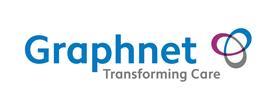Catherine McClennan explains how using population health insights to target support, Cheshire and Merseyside have improved maternal and neonatal care, reduced health inequalities and enhanced outcomes for vulnerable communities
It is now widely recognised that significant health inequalities exist in maternity and neonatal care in England. Mothers and Babies: Reducing Risk through Audit and Confidential Enquiries-UK, which investigates deaths during pregnancy, childbirth, and the year after birth, is just one annual report that has revealed the extent of these disparities. In November 2022, it was revealed that Black women are four times more likely to die from childbirth than White women, with women in the most deprived areas 2.5 times more likely to die than those in the least deprived areas.
Sponsored by
The NHS has responded with its three-year delivery plan for maternity and neonatal services, which was published in March 2023. Insights from population health data were highlighted as being one of the key tools that will be used to reduce inequalities for all in access, experience, and outcomes – and to provide targeted support where health inequalities exist in line with the principles of proportionate universalism.
Using population health insights to improve healthcare outcomes for women
There is clearly work to be done, and some of the statistics make for difficult reading. However, it is important to note that there are pockets of proactivity. In Cheshire and Merseyside, for example, we have made positive strides forward using a data-driven approach to help identify and support women in need of vital care.
Four years ago, we built a pregnancy population health dashboard with our partners at Graphnet Health, to help us respond to the pandemic. We didn’t know at the start how many women were coming forward for covid-19 vaccinations and we didn’t have information about those that weren’t. We didn’t know where they were living, what their ethnicity was, and why some of them were hesitant about getting the vaccine. The dashboard allowed us to track data using NHS numbers and helped us focus on interventions.
It provided us with a rich pool of intelligence and shone a light on the activity that we needed to prioritise. We then took that data and worked collaboratively across the system – not just with health but with communities, including through our own community engagement team who have lots of connections with local groups and leaders. One of the resulting initiatives was a roving vaccination bus, which attracted hundreds of people.
As a result, covid-19 vaccination rates amongst pregnant women in Cheshire and Merseyside increased by more than 25 per cent.
Positive progress – from smoking cessation to supporting vulnerable women
Since the pandemic, the programme has evolved and is now being used to improve outcomes in a number of different areas. Information from health and care providers flows into the population health dashboard – including vaccination status, stage of gestation, age, ethnicity, any long-term conditions, and socioeconomic factors. This allows our health and care professionals to identify and support those most at risk of poor outcomes during pregnancy.
Several vulnerable groups have been identified, such as those with learning disabilities, BMI more than 60, long-term conditions, mental health issues, and those with addiction issues. These individuals are being proactively followed up with by a community engagement team, which has been handpicked to be representative of the local population.
One key area for us has been tackling tobacco use during pregnancy. Population health data insights have enabled us to target support services where they are needed most. Amongst other activities, peer support volunteers are providing virtual support to pregnant women who smoke for as long as needed and those under the care of enhanced continuity of carer teams, who may be experiencing social isolation; language and cultural barriers; homelessness, and housing difficulties; challenges accessing services; or require parenting support. Over the past year, smoking during pregnancy has dropped by 2.1 per cent.
The dashboard is also being used to identify regions with increased rates of teenage pregnancies and to improve cervical screening rates.
Moving forwards
Pregnancy is one period in a person’s life where healthcare inequalities are emphasised. Our approach, supported by the pregnancy dashboard, is providing us with the insights that we need to take meaningful action.
We’re continuing to use the dashboard. We are developing it, we keep looking at it and in terms of intelligence, it is helping us showcase the key work that needs to be done and what we need to prioritise in terms of population health.
We’re continuing to use the data to tailor what we do for specific communities, which vary widely across the Cheshire and Merseyside region, and provide fast, targeted care to those at the greatest risk. It is guiding our community communications and campaigns and helping us broaden the remit of initiatives like the Living Well Bus service provided by CWP, which now offers several women’s services.
We’re incredibly proud of our journey so far and the access to data has been transformational. However, it’s important to emphasise that the technology is a means to an end. The most important part of this story is the women, children, and families receiving better support as a result of the work being done after the data has been collected and analysed.
It’s all about making those numbers and those digital platforms bring to life what is actually happening in people’s lives and their communities. Having worked with several families, including many that struggled with pregnancies and birth during the pandemic, it feels good to be moving forward in a positive direction, and putting initiatives in place to make quality maternal and neonatal care easily accessible to all. Click here for more information.




























